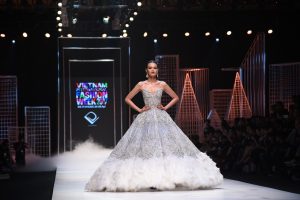Fabric Foundations: Material Knowledge Guide
A key component of any successful garment or textile project is a strong understanding of fabric foundations. These materials lay the groundwork for creating a beautiful, durable finished product. Whether you’re a seasoned professional or just starting out in the world of fashion and sewing, it’s important to have a comprehensive grasp of the different types of fabric and their unique properties. In this article, we’ll dive into the world of fabric foundations and provide a comprehensive guide to help you navigate through the different materials. 
The Importance of Knowing Your Fabrics
Before we dive into the specifics of fabric foundations, it’s important to understand why it is crucial to have a good understanding of the materials you use in your projects. Choosing the right fabric can make or break your final product. The wrong material can result in a garment that is uncomfortable to wear, lacks the desired drape or texture, or simply won’t hold up to wear and tear. By having a deep knowledge of fabrics, you can make informed decisions and create high-quality, long-lasting pieces.
Types of Fabric Foundations
There are many different fabric foundations to choose from, and each one has its unique characteristics. Some of the most commonly used fabric foundations include cotton, silk, linen, wool, and synthetic materials like polyester, nylon, and rayon. Each fabric type has its own set of attributes, such as weight, drape, and care instructions. Let’s take a closer look at some of the most popular fabric foundations and their properties.
Cotton
Cotton is a natural, plant-based fiber that is soft, breathable, and absorbent. It’s one of the most widely used fabric foundations and can be found in a variety of weights, from lightweight voile to heavy-duty canvas. Cotton fabrics are easy to care for and can be machine-washed and dried. However, they can shrink when exposed to high heat, so it’s essential to follow the care instructions carefully.
Silk
Silk is a luxurious, natural fiber that is created from silkworm cocoons. It’s known for its smooth, lustrous appearance and drapes beautifully. Silk fabrics can range from lightweight and sheer to heavy and opaque. However, silk is a delicate fabric that needs special care, such as hand washing and air drying.
Linen
Linen is another natural fabric that is made from flax plant fibers. It’s known for its durability and cool, crisp feel. Linen fabrics are often used for warm-weather garments due to their breathability. They can also be found in a variety of weights and textures, from sheer to heavy canvas. Linen does tend to wrinkle easily, but this is considered part of its look and charm.
Wool
Wool is a natural animal-based fiber that comes from sheep, goats, and other animals. It’s known for its warmth and insulating properties, making it ideal for colder climates. Wool fabrics come in a variety of forms, from soft and fluffy to tightly woven. This fabric does require special care, such as hand washing and laying flat to dry.
Synthetic Materials
Synthetic materials like polyester, nylon, and rayon are man-made fibers that are often used in garments and textiles. These materials are known for their durability and wrinkle-resistance, making them ideal for everyday clothing. Synthetic fabrics can also mimic the look and feel of natural fibers, providing a more affordable option for clothing and home decor.
Choosing the Right Fabric Foundation
When it comes to choosing the right fabric foundation, there is no one-size-fits-all approach. The best fabric for your project will depend on the intentions of the finished product, its desired look and feel, and the level of care you are willing to put into it. Consider the following factors when choosing a fabric foundation:
- Weight and drape: Consider the weight and drape of the fabric to achieve the desired look and feel of the garment or textile.
- Intended use: Think about how the final product will be used and choose a fabric that can withstand those activities. For example, if you’re making a dress for a wedding, you may want to choose a more delicate, luxurious fabric like silk. But if you’re making a pair of pants for everyday wear, a durable, wrinkle-resistant fabric like polyester may be a better option.
- Care instructions: Be realistic about the amount of care you are willing to put into a fabric. Delicate fabrics like silk and wool may require special handling and cannot be thrown in the washing machine and dryer like cotton and synthetic materials.
In Conclusion
Having a solid understanding of fabric foundations is vital for any successful sewing or fashion project. By knowing the different types of fabrics and their unique properties, you can make informed decisions and create high-quality, long-lasting pieces that will stand the test of time. So next time you’re planning a project, take the time to consider the fabric foundations and choose the best one for your needs. Happy sewing!











